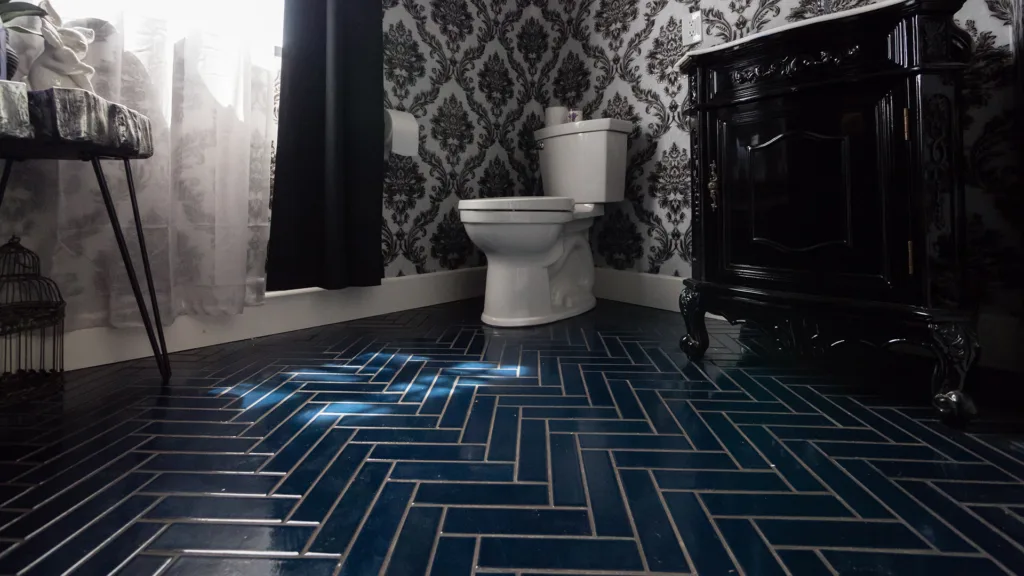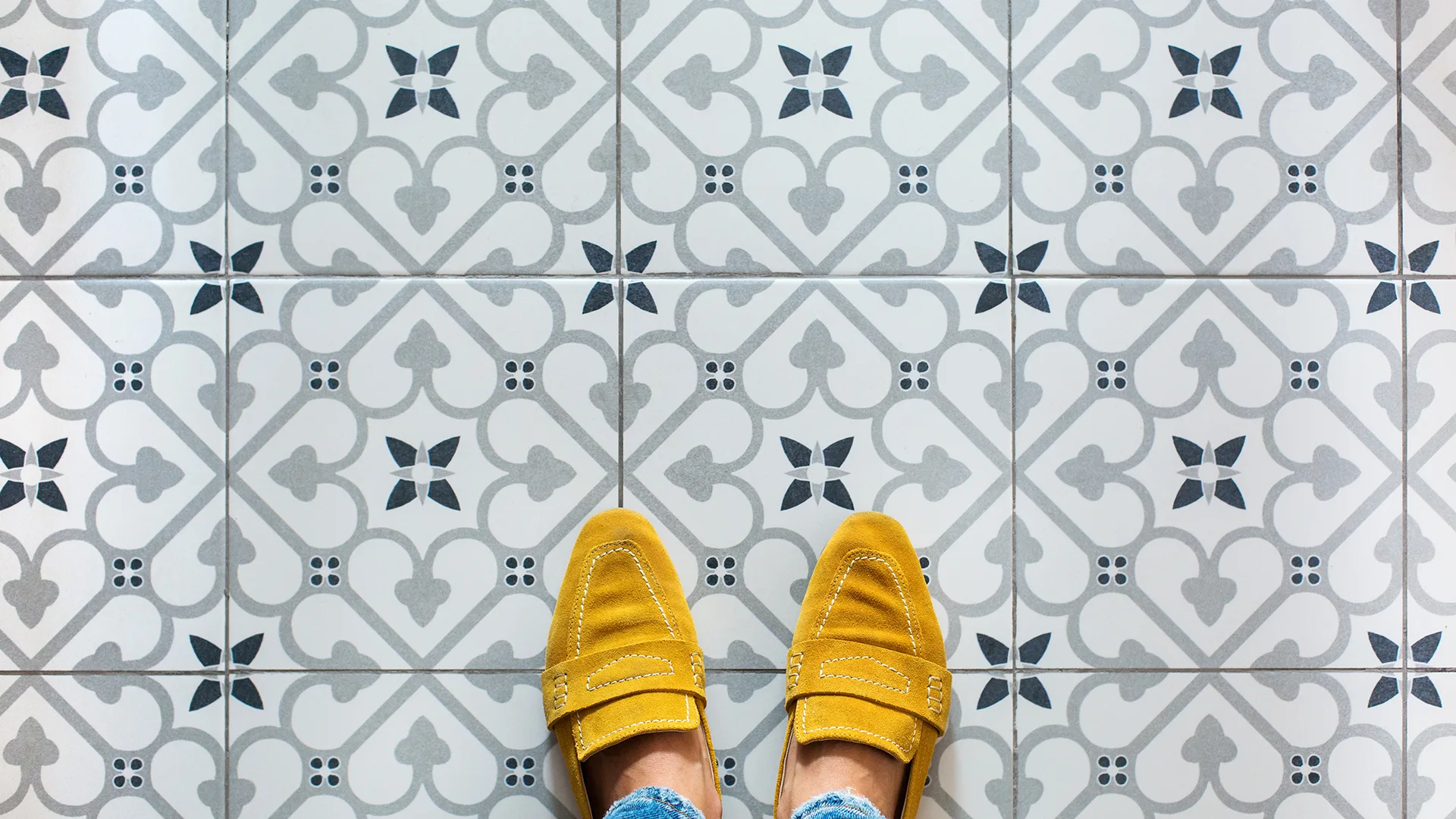Selecting the ideal tile for your home requires more than simply choosing a color or pattern that appeals to you. Tiles are available in a variety of materials, sizes, and designs, each with its own set of distinct features and benefits. In this thorough guide, we’ll take you through the essential factors to consider when choosing the perfect tile for various areas in your home. We’ll explore the pros and cons of different tile materials, such as ceramic, porcelain, natural stone, and glass, and provide guidance on which materials are best suited for specific applications. We’ll also delve into the various tile sizes and shapes available and offer advice on how to choose the right style to complement your home’s aesthetic. Furthermore, we’ll provide tips on installation and maintenance to ensure that your tiles remain in excellent condition for years to come.
1. Material Matters:
Ceramic tiles are an excellent choice for those looking for an affordable and versatile option for their flooring needs. They come in an extensive range of colors and patterns, making it easy to find the perfect match for any decor. In addition, ceramic tiles are highly resistant to water and stains, making them ideal for use in areas such as bathrooms, kitchens, and laundry rooms. They are also easy to clean and maintain, making them a popular choice for busy households. Whether you’re looking to renovate your home or simply update your flooring, ceramic tiles are a practical and stylish choice that won’t break the bank.
Porcelain tiles are an excellent choice for those looking for durability and low-maintenance. They are made from a high-density ceramic material that is fired at extremely high temperatures, making them strong and long-lasting. They are also highly resistant to scratches, stains, and wear and tear, making them ideal for high-traffic areas like hallways, entryways, and living rooms.
Porcelain tiles are also moisture-resistant, which makes them a great option for bathrooms and kitchens. They do not absorb water easily, and this makes them resistant to mold and mildew growth. Additionally, they are easy to clean, and you can maintain their shine and beauty with minimal effort.
Porcelain tiles come in a variety of sizes, shapes, and finishes, and you can choose from a range of colors and patterns to match your decor. They are versatile and can be used on floors, walls, and even countertops, providing a seamless and cohesive look throughout your home.
When it comes to choosing a material for your home’s flooring, natural stone options like marble, granite, and travertine can offer a luxurious and unique look that can elevate the aesthetic of any space. However, it’s important to note that these materials require more maintenance compared to other flooring options. Natural stone floors need to be regularly cleaned and sealed to maintain their beauty and functionality in the long run. Additionally, it’s worth mentioning that natural stone floors are susceptible to staining due to their porous nature. Therefore, it’s essential to clean up spills and stains immediately to prevent them from penetrating the stone and leaving behind unsightly marks.
2. Size and Shape:
Using large format tiles is a great way to enhance the appearance of small rooms while creating a contemporary, streamlined look. Large tiles, typically 12 inches or more in size, can provide a sense of spaciousness by reducing the number of grout lines, which can make the room seem cluttered. Moreover, they are easier to clean and maintain, since they have fewer joints and seams, which can accumulate dirt and grime. By opting for large format tiles, you can transform your space into a stylish and functional retreat that reflects your personal taste and lifestyle.
Subway tiles are a type of rectangular tiles that are often used in kitchen backsplashes and bathrooms. They have been around for over a century and still remain a popular choice because of their classic and timeless appeal. These tiles can be made from a variety of materials, including ceramic, porcelain, and glass. They are typically small in size, with the most common size being 3 inches by 6 inches. However, there are also larger and smaller sizes available. One of the major advantages of subway tiles is their versatility. They can be arranged in a variety of patterns, including the classic running bond pattern, herringbone, and basketweave. Moreover, they come in a wide range of colors, from the traditional white to bold and vibrant shades. Subway tiles are easy to clean and maintain, making them a practical choice for high-traffic areas. In addition to being functional, they add a touch of elegance and sophistication to any space.
Mosaic tiles are a great option for those who want to add an extra layer of visual interest to their spaces. These tiles are small and come in various intricate designs, which can be used to create stunning patterns. They work particularly well as accent pieces, adding texture and depth to the overall design. With mosaic tiles, one can play around with different colors, shapes, and materials to create unique and personalized designs that can elevate any space.
3. Color and Pattern:
Neutral Tones are a great choice for your home decor. Not only do they provide a timeless and versatile backdrop, but they also allow you to experiment with bolder decor elements. For example, you can use neutral colors for your walls, floors, and furniture, and then add pops of color with accent pieces such as throw pillows, curtains, or artwork.
When it comes to Bold Patterns, consider using tiles with bold patterns for accent walls or specific areas to add personality and visual interest to the space. This can be a great way to make a statement in a room and create a focal point. Some popular bold patterns include geometric shapes, floral prints, and abstract designs.
It’s also important to consider the Grout Color when choosing tile for your space. The color of grout can significantly impact the overall look. Choosing a contrasting grout color can highlight the tile pattern and make it stand out. On the other hand, choosing a similar grout color can create a more seamless look and make the tile blend in with the surrounding area. Keep this in mind when making your tile selections to ensure a cohesive and polished look in your space.

4. Room-Specific Considerations:
When choosing tiles for your bathroom, it’s important to keep in mind that they’ll be frequently exposed to water. To ensure that your tiles stay in good condition, it’s recommended to opt for tiles with high water resistance, such as porcelain or ceramic. These tiles are durable and easy to maintain, making them a popular choice for bathrooms. Additionally, it’s always a good idea to consider textured tiles for better slip resistance, especially if you have kids or elderly people in your household.
When it comes to kitchens, you’ll want to choose tiles that are durable and easy to clean. Porcelain or ceramic tiles work well in this area, as they can withstand spills and heavy foot traffic. However, it’s important to note that porous tiles should be avoided, as they can absorb spills and stains, which can be difficult to remove. Therefore, it’s recommended to go for non-porous tiles that will keep your kitchen looking great for years to come.
In living areas, style is often the primary consideration. There are many tile options to choose from, including wood-look tiles that offer a warm, natural appearance. These tiles are popular because they can add a touch of elegance to your living space while being easy to maintain. Ultimately, your choice of tile will depend on your personal style preferences, as well as the specific needs of your household.
5. Budget and Longevity:
When it comes to choosing tiles, there are two main factors to consider: budget and long-term investment. Ceramic tiles are usually more budget-friendly compared to natural stone tiles, which can be more expensive. However, natural stone tiles have a unique and elegant look that can add more value to your space. Therefore, when making a decision, it’s important to think about your budget and the overall style you want to achieve.
Another important consideration is the long-term durability and maintenance requirements of the tile. While ceramic tiles are generally durable, they can be prone to cracking or chipping in high traffic areas. On the other hand, natural stone tiles are more durable and can withstand heavy foot traffic, but they require more maintenance and care. Investing more upfront in durable tiles can save you money in the long run by reducing the need for frequent repairs or replacements. So, it’s important to weigh the pros and cons of each tile type before making a final decision.
6. Ease of Maintenance:
When it comes to selecting tiles for your home, it’s important to consider a range of factors to ensure you choose the perfect tiles for each room. The material of the tile is one of the most important things to consider. Porcelain and ceramic tiles are great options for those looking for low-maintenance options that are easy to clean and maintain. These tiles are a popular choice for bathrooms, kitchens, and laundry rooms, where spills and stains are common.
On the other hand, natural stone tiles are a more luxurious option that can add a touch of elegance to any room. However, they require more attention and may need specific cleaning products to maintain their appearance over time. If you’re considering natural stone tiles, it’s important to research and understand the specific care requirements for the type of stone you choose.
In addition to material, tile selection should also consider size, color, and room-specific needs. For example, larger tiles can make a room appear more spacious, while smaller tiles can create a more intricate and detailed look. The color of the tile should complement the overall color scheme of the room and create the desired mood or ambiance. Room-specific needs, such as slip resistance for a bathroom or durability for a high-traffic area, should also be taken into account.
Choosing the right tiles for your home is an important decision that can affect the look and feel of your space for years to come. It’s recommended to take your time exploring options and seeking advice from professionals to ensure you make the best choice for your specific needs. With careful consideration, you can select tiles that not only enhance the aesthetics of your home but also meet the practical requirements of each space.



